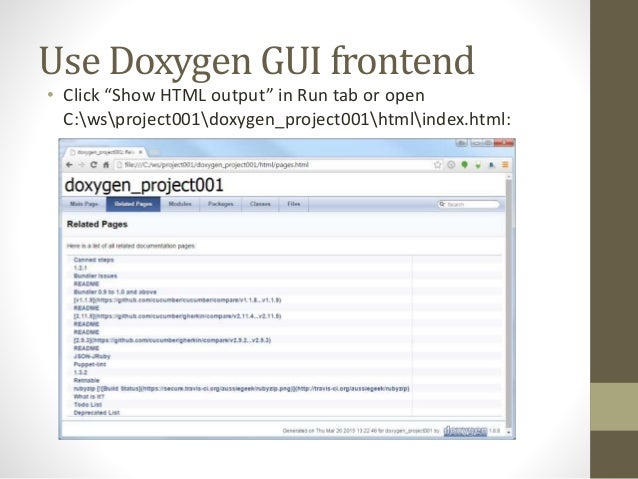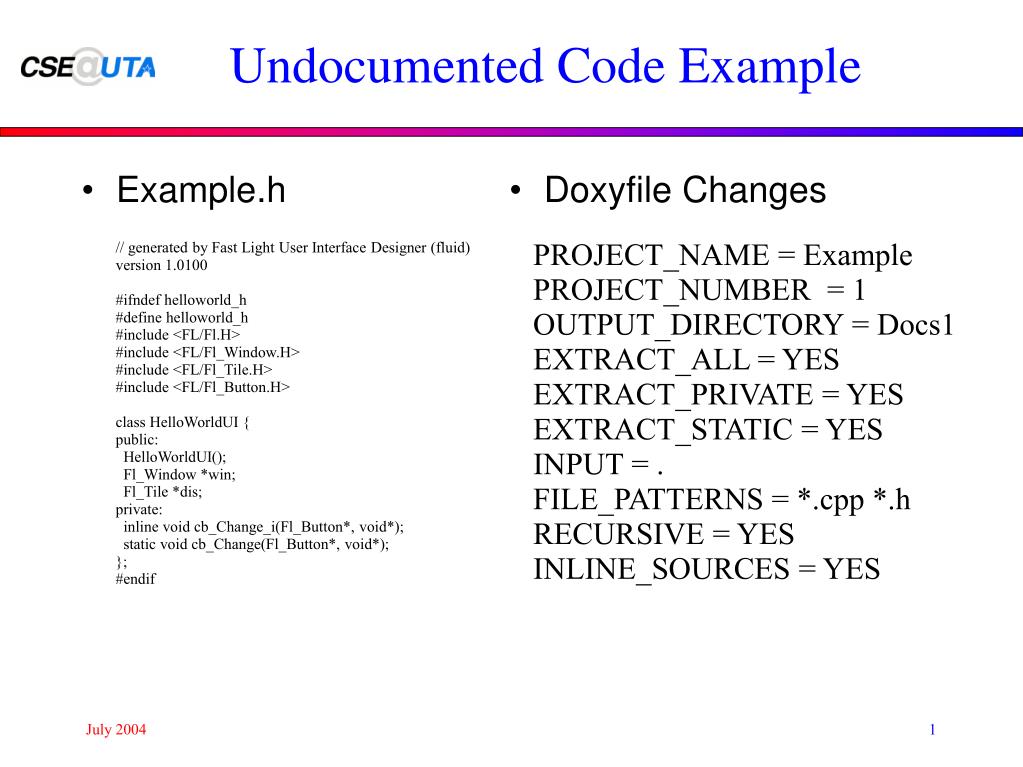

- #Doxygen special commands serial
- #Doxygen special commands driver
- #Doxygen special commands full
- #Doxygen special commands software
- #Doxygen special commands code
You may be looking at the BSP headers and notice Left out and which features are being implemented by using shared codeįrom either from the architecture (./shared) or the base bsps/ sharedĭirectory (././shared). Tell by looking at the directory of a BSP which features have simply been This code, this can make your life a little bit harder. This greatly aids the developer, but as someone seeking to document In reducing the development and debugging time for implementing newīSPs.

#Doxygen special commands software
Is done so that chunks of software can be reused, as well as aiding
#Doxygen special commands code
So that the same piece of code can be shared across multiple CPUĪrchitectures, or across multiple boards on the same architecture. Some of the RTEMS executive is hardware independent and can be abstracted What has been implemented on the BSP level and what has not. The BSP sub directories, so you should be able to tell in most cases RTEMS follows a standardized naming convention for Note that there is no guarantee a particular BSP will implement all of These are just some of the things you should be looking for when adding * start and startup: C and assembly used to initialize the * tm27: specific routines for the tm27 timing test The most common module shared by all boards) * irq: support for how the processor handles interrupts (probably * gnatsupp: BSP specific support for the GNU Ada run-time
#Doxygen special commands driver
* shmsupp: support of shared memory driver MPCI layer in a * rtc or tod: support for the hardware real time clock * timer: support of timer devices, used for timing tests * clock: support for the clock tick - a regular time basis for the kernel Just a console driver, it deals with the board UART (i.e.
#Doxygen special commands serial

* so you do not really need to read this section. There is nothing which really needs your notice, * \note This text shall only show you, how such a \"note\" section * because this text is basically saying nothing. * is totally senseless and you really do not need to read this, * \details This function does something which is doing nothing.
#Doxygen special commands full
Details followĪnd finally here an example for a full documentation of a function with doxygen: /** / Brief description which ends at this dot. If JAVADOC_AUTOBRIEF is set to YES in the configuration file, then using JavaDoc style comment blocks will automatically start a brief description which ends at the first dot followed by a space or new line. This command ends at the end of a paragraph, so the detailed description follows after an empty line. One could use the \brief command with one of the above comment blocks. * A brief description in one short sentence.įor the brief description there are also several possibilities: * \brief A brief description in one short sentence. All commands in the documentation start with a backslash () or an at-sign example /** To structure and fomat the generated documentation, Doxygen provides a large number (> 170) of special commands. Note the 2 slashes to end the normal comment block and start a special comment block. Some people like to make their comment blocks more visible in the documentation. The next alternative is to use the Qt style and add an exclamation mark (!) after the opening sequence of a C-style comment block: /*!Ī third alternative is to use a block of at least two C++ comment lines, where each line starts with an additional slash or an exclamation mark: /// The first and most common one are C style comments with an extra asterisk in the comment start sequence, e.g.: /** There are several ways to mark a comment block as a detailed description, so that this comment block is parsed by Doxygen and added as a description of the following code item to the documentation. Since the Documentation for doxygen is new, you may need to create initial versions of those related topics. It should also mention any large subjects within doxygen, and link out to the related topics. This section provides an overview of what doxygen is, and why a developer might want to use it.


 0 kommentar(er)
0 kommentar(er)
